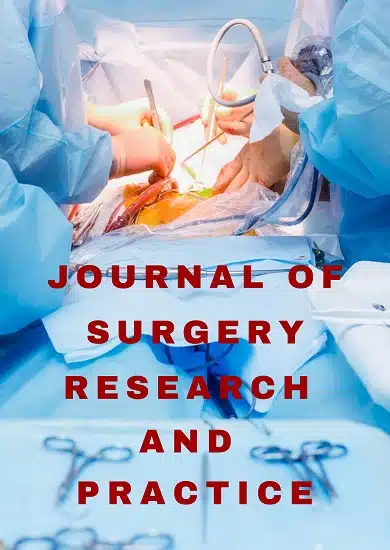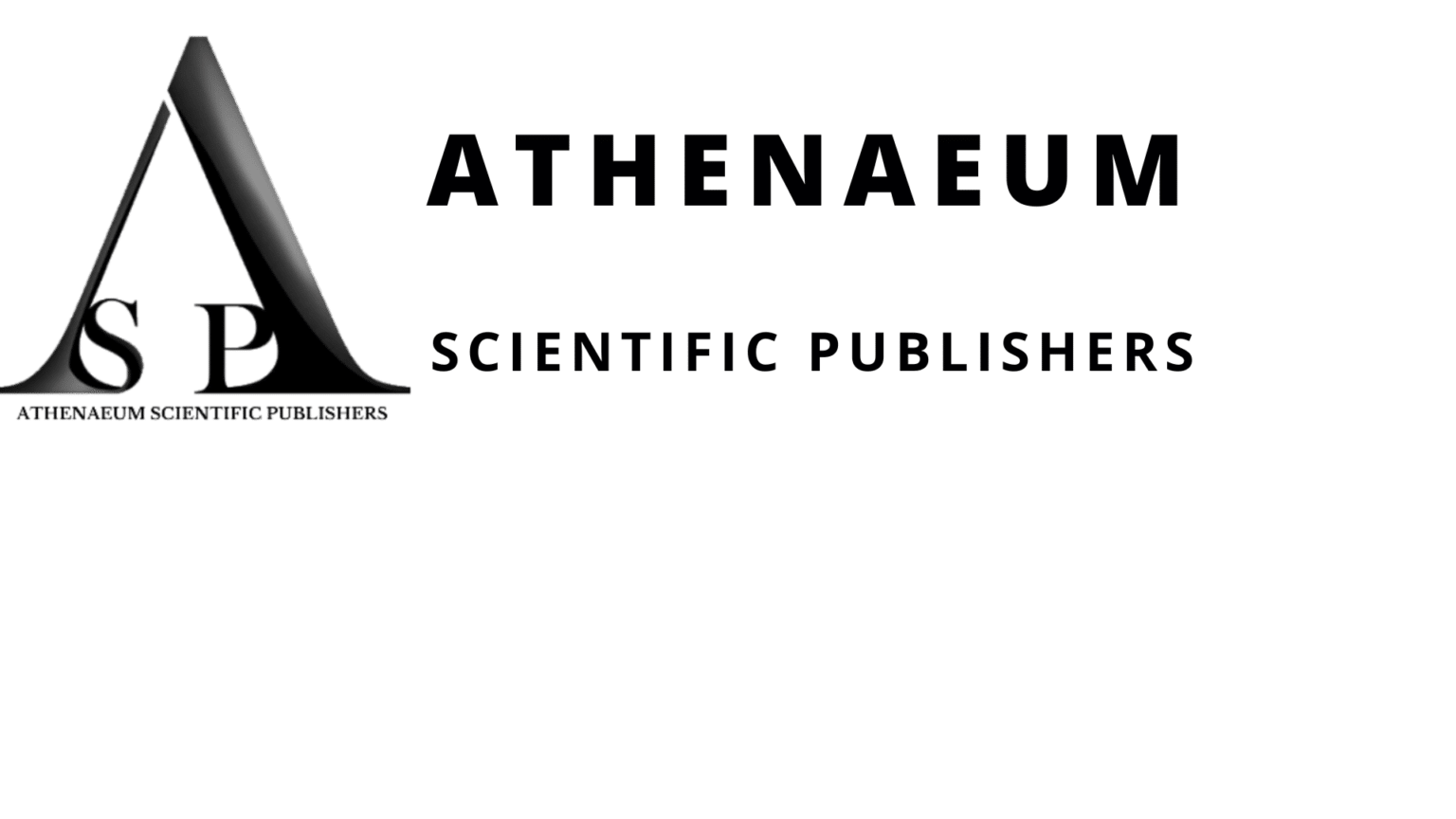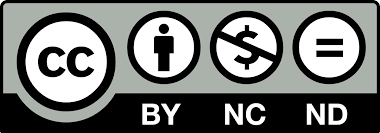Research Article | Vol. 6, Issue 1 | Journal of Surgery Research and Practice | Open Access |
Topical Mupirocin Vs Traditional Dressing for Persistent Skin Ulcers: A Randomized Controlled Trial
Jayalal JA1*, S Edwin Kins Raj2, G John Nickson2, E Suresh Manikandan2, Venkatesh K3, Chithra3
1Professor and Head of Department of General Surgery, Kanyakumari Govt. Medical College, India
2Assistant Professor, Department of General Surgery, Kanyakumari Govt. Medical College, India
3Post Graduate of General Surgery, Kanyakumari Govt. Medical College, India
*Correspondence author: Jayalal JA, Professor and Head of Department of General Surgery, Kanyakumari Govt. Medical College, India; Email: [email protected]
Citation: Jayalal JA, et al. Topical Mupirocin Vs Traditional Dressing for Persistent Skin Ulcers: A Randomized Controlled Trial. J Surg Res Prac. 2025;6(1):1-6.
Copyright© 2025 by Jayalal JA, et al. All rights reserved. This is an open access article distributed under the terms of the Creative Commons Attribution License, which permits unrestricted use, distribution, and reproduction in any medium, provided the original author and source are credited.
| Received 26 February, 2025 | Accepted 14 March, 2025 | Published 21 March, 2025 |
Abstract
Backgrounds: Mupirocin and traditional dressing are commonly used treatments that can aid in wound healing. This study aimed to investigate the use of mupirocin and traditional dressing in treating patients with chronic skin ulcers. Wounds are common injuries that require proper management and care to promote healing and prevent complications.
Methods: The efficacy of mupirocin and traditional dressings in treating persistent skin ulcers are compared in this randomized controlled experiment. This study was authorized by the institutional ethics committee and before participating, each subject gave written informed permission. There were 60 participants in all, 16 of whom were female and 44 of whom were male. The study used descriptive statistics to analyze the data and recorded each patient’s gender, age group, hospital stays and wound surface area every week until four weeks.
Results: Male patients (26) were treated with mupirocin more often than female patients, according to the results. Ten patients in the 51-60 age range received mupirocin treatment, the most of any group. In contrast, the highest number of patients treated with traditional dressing was in the under-40 age group with eight. The mean wound surface area for mupirocin wounds is consistently lower than the traditional dressing. Mupirocin had a shorter mean hospital stay of 32.10 days compared to the traditional dressing of 45.57 days.
Conclusion: In terms of decreasing the surface area of wounds and minimizing hospital stays, Mupirocin may be more efficient than traditional wound dressings. These results could enhance clinical decision-making and improve patient outcomes in managing chronic skin ulcers.
Keywords: Chronic Skin Ulcers; Mupirocin; Traditional Dressings
Introduction
Chronic skin ulceration is a condition where there is a break in the continuity of the covering epithelium – skin or mucous membrane that lasts for more than four weeks and shows no sign of healing or frequently recurs. This condition has a significant impact on patients’ quality of life and places a substantial burden on the healthcare system [1]. Diabetes mellitus, venous or arterial insufficiency, trauma, cancer, smoking and superadded infections are some of the risk factors for developing chronic skin ulcers [2]. Moist skin ulcers foster bacterial growth, allowing for the identification of several microorganisms through culture.
Microbiological exploration has shown that bacteria may colonize 80% to 100% of leg ulcers. Staphylococcus aureus and Pseudomonas aeruginosa are the most common isolates [3]. These microorganisms can complicate the healing process, making it essential for healthcare providers to implement effective management strategies. Regular assessment and tailored treatment plans are crucial in addressing the underlying causes and promoting wound healing.
The use of systemic or topical drugs that act on wound repair and regeneration processes has shown promise in treating chronic venous ulcers. These medicines can help new blood vessels grow, boost the immune system in the area and make growth factors like Epidermal Growth Factor (EGF), Transforming Growth Factor ß (TGF-ß) and basic Fibroblast Growth Factor (bFGF) as well as stimulate neo-angiogenesis and a local immune reponse. Wound repair and regeneration are complex processes that involve a range of cellular and molecular mechanisms, including inflammation, angiogenesis and extracellular matrix remodeling. Using drugs that target these processes can help promote wound healing and improve the outcome of chronic venous ulcers [4,5].
Topical antibiotics include metronidazole, bacitracin, gentamicin, neomycin, fusidic acid, mupirocin and polymyxin B, combinations are commonly used to treat superficial skin ulceration with inflammation [6,7]. Additionally, the use of advanced dressings, such as hydrocolloids and alginates, can create a conducive environment for healing by maintaining moisture and protecting the wound from infection. Applications rich in epidermal growth factor, platelet derived growth factor, phenytoin and other drugs are used to increase granulation tissue formation and wound healing [9]. It is essential for healthcare providers to assess the specific needs of each patient, tailoring treatment approaches to facilitate optimal recovery and minimize complications.
However, because bacteria are becoming more resistant to antimicrobial drugs, prescribing guidelines now say that these antibacterial mixtures should only be used in certain situations and not just for killing microbes, especially in cases where there are clinical signs of infection.
Mupirocin is an antibiotic ointment that exhibits activity against gram-positive and gram-negative bacteria. Mupirocin (pseudomonic acid A) comes from the common gram-negative bacterium Pseudomonas fluorescens. It binds to bacterial isoleucyl-tRNA synthetase and stops them from making protein and RNA. The inhibition of isoleucyl-tRNA synthetase production reduces the cellular levels of isoleucine-charged transfer RNA, thereby stopping protein and RNA synthesis in bacteria. It stops skin bacteria that are gram-positive, like Staphylococcus aureus and coagulase-negative Staphylococci, from working well. Its unique chemical composition and quick systemic metabolism limit its application to topical use, potentially reducing the risk of cross-resistance compared to other antibiotics currently available in the market. It has no oral derivative and is exclusively available as topical formulations, which reduces the possibility of resistance and could be useful for managing wound care. Its use in treating skin infections and nasal colonization of Methicillin-Resistant Staphylococcus Aureus (MRSA) is well documented. Information suggests that mupirocin is commonly used as a treatment for skin ulcers, but its effectiveness in this context remains unclear [8]. The study aims to determine whether mupirocin is more effective than the traditional method in healing chronic skin ulcers. The study will conduct a randomized controlled trial, assigning participants with chronic skin ulcers to either mupirocin treatment or the traditional method. By comparing healing rates and assessing any potential side effects, the researchers hope to provide clearer guidance on the optimal management of these challenging wounds.
Mupirocin is an antibiotic ointment that exhibits activity against gram-positive and gram-negative bacteria. Mupirocin (pseudomonic acid A) comes from the common gram-negative bacterium Pseudomonas fluorescens. It binds to bacterial isoleucyl-tRNA synthetase and stops them from making protein and RNA. The inhibition of isoleucyl-tRNA synthetase production reduces the cellular levels of isoleucine-charged transfer RNA, thereby stopping protein and RNA synthesis in bacteria. It stops skin bacteria that are gram-positive, like Staphylococcus aureus and coagulase-negative Staphylococci, from working well. Its unique chemical composition and quick systemic metabolism limit its application to topical use, potentially reducing the risk of cross-resistance compared to other antibiotics currently available in the market. It has no oral derivative and is exclusively available as topical formulations, which reduces the possibility of resistance and could be useful for managing wound care. Its use in treating skin infections and nasal colonization of Methicillin-Resistant Staphylococcus Aureus (MRSA) is well documented. Information suggests that mupirocin is commonly used as a treatment for skin ulcers, but its effectiveness in this context remains unclear [8]. The study aims to determine whether mupirocin is more effective than the traditional method in healing chronic skin ulcers. The study will conduct a randomized controlled trial, assigning participants with chronic skin ulcers to either mupirocin treatment or the traditional method. By comparing healing rates and assessing any potential side effects, the researchers hope to provide clearer guidance on the optimal management of these challenging wounds.
Stage | Grade | Character |
A | Grade 1 | Superficial ulcer |
B | Grade 2 | Ulcer Involving ligament, tendon, joint capsule or fascia, No abscess or osteomyelitis |
C | Grade 3 | Deep ulcer with abscess or osteomyelitis |
D | Grade 4 | Gangrene |
E | Grade 5 | Extensive gangrene |
Table 1: Wagner grading system for skin ulcers.
Inclusion Criteria:
Patients of both genders aged between 45 and 85 years with non-healing chronic ulcers of Grade 1 and 2, such as diabetic ulcers, traumatic ulcers, pressure sores, amputation stump ulcers and post-surgical wound gaping of at least six weeks duration, were included.
Exclusion Criteria:
- Ulcers with bone-exposed raw areas
- Malignant ulcers
- Reduced vascularity
- Patients with connective tissue and immune system disorders
- Patients on immunosuppressive drugs, steroids, chemotherapy and radiotherapy
We recruited participants from the hospital’s outpatient clinic and randomly assigned them to either the mupirocin or traditional dressing groups. The mupirocin group cleaned the ulcers, applied mupirocin ointment to the ulcer bed once a day and covered the wound with a sterile dressing. The traditional dressing group cleaned the ulcers and then covered them with sterile dressings.
We analyzed the data using appropriate statistical tests, such as t-tests or chi-square tests. The level of significance was set at p < 0.05.
Results
Total number of patients included in the study are 60, with male and female of 30.
Mupirocin | Traditional dressing | ||
Gender | Male | 18 | 26 |
Female | 12 | 4 | |
Age | <40 | 5 | 8 |
41-50 | 5 | 7 | |
51-60 | 15 | 10 | |
>60 | 5 | 5 | |
Table 2: Distribution of gender and age between groups.
Based on the Wagner grading the ulcers were graded and number of patients in each grades are shown here in Table 3.
SN | Ulcer (Wagner) grading | Group I | Group II |
1 | Grade 1 | 16 | 18 |
2 | Grade 2 | 14 | 12 |
Table 3: Ulcer (Wagner) grading.
Diabetes mellitus, venous or arterial insufficiency, trauma, cancer, smoking and superadded infections are some of the risk factors for developing chronic skin ulcers. The following Table 4,5 shows the associated comorbidities and types of ulcer.
SN | Comorbidities | Group I | Group II | P value |
1 | Diabetes Mellitus | 12 | 14 | 0.588 |
2 | Hypertension | 7 | 9 | 0.622 |
3 | IHD | 6 | 3 | 0.128 |
4 | BMI > 30 | 5 | 4 | 0.577 |
Table 4: Co-morbidities.
SN | Ulcer Etiology | Group I | Group II |
1 | Diabetes Ulcer | 12 | 13 |
2 | Traumatic Ulcer | 9 | 10 |
3 | Arterial Ulcer | 3 | 2 |
4 | Venous Ulcer | 4 | 3 |
5 | Infective Ulcer | 2 | 2 |
Table 5: Presents the distribution of ulcer types across.
The mean wound surface area decreases over time for both treatment methods, indicating that the wounds are healing. However, we can also see that the mean wound surface area for wounds treated with mupirocin is consistently lower than that for wounds treated with traditional dressing. Patients who received mupirocin had a shorter mean hospital stay of 32.10 days than those who received traditional treatment, whose mean hospital stay was 45.57 days (Table 6).
The sequential change in ulcer features is seen in Table 5. Between baseline and the end of the research, the ulcer size in both arms considerably shrank (P < 0.001). Fisher’s exact test for the ulcer’s categorical characteristics and the Mann-Whitney U-test for ulcer size and wound infection score provide the P values used to compare the two groups. SD stands for Standard Deviation is represented by SD and interquartile range by IQR.
The mupirocin therapy group dramatically decreased the median ulcer area after 6 weeks.
of treatment, even though the groups were comparable at baseline and at the end of week 3. By the end of six weeks, 41.30% of participants in the mupirocin group had fully healed their ulcers, compared to 18.18% in the mupirocin-only group (P = 0.022).
Parameter | Traditional (30) | Mupirocin (n=30) | (P) Value | |
Wound Size at baseline (cm2) | ||||
Range | 1.81-15.75 | 1.12-19.51 | 0.830 | |
Mean±SD | 7.02±3.116 | 7.16±3.372 | ||
Median (IQR) | 6.63 (4.74-8.84) | 6.66 (4.42-8.98) | ||
Wound Size by the end of 3 weeks (cm2) | ||||
Range | 0.00-12.26 | 0.00-10.92 | 0.074 | |
Mean±SD | 4.51±2.874 | 3.45±2.736 | ||
Median (IQR) | 4.07 (2.20-6.66) | 3.12 (1.20-4.42) | ||
Wound Size by the end of 6 weeks (cm2) | ||||
Range | 0.00-10.00 | 0.00-10.48 | 0.020 | |
Mean±SD | 2.97±2.734 | 1.67±2.472 | ||
Median (IQR) | 2.43 (0.84-4.88) | 0.93 (0.00-1.96) | ||
Baseline Wound infection score | ||||
Range | 4.0-10.0 | 4.0-9.0 | 0.631 | |
Mean±SD | 6.2±1.57 | 6.7±1.41 | ||
Median (IQR) | 6.0 (5.0-7.0) | 7.0 (6.0-8.0) | ||
6 weeks -Wound infection score | ||||
Range | 4.0-10.0 | 4.0-6.0 | 0.341 | |
Mean±SD | 4.5±0.69 | 4.1±0.35 | ||
Median (IQR) | 4.0 (4.0-4.0) | 4.0 (4.0-4.0) | ||
Pain, n (%) | ||||
Baseline | 35 (79.53) | 40 (86.96) | 0.405 | |
Follow-up (3 weeks) | 5 (11.38) | 8 (17.39) | 0.552 | |
End of study (6 weeks) | 4 (9.09) | 1 (2.17) | 0.198 | |
Discharge, n (%) | ||||
Baseline | 29 (65.93) | 37 (80.43) | 0.154 | |
Follow-up (3 weeks) | 11 (25.00) | 6 (13.04) | 0.183 | |
End of study (6 weeks) | 5 (11.36) | 0 (0.00) | 0.025 | |
Erythema, n (%) | ||||
Baseline | 9 (20.45) | 15 (32.63) | 0.237 | |
Follow-up (3 weeks) | 2 (4.53) | 1 (2.17) | 0.612 | |
End of study (6 weeks) | 1 (2.25) | 1 (2.17) | 1.000 | |
Table 6: Variations in ulcer features over time between research groups.
Discussion
An ageing population and a higher prevalence of risk factors such as smoking, obesity and diabetes, which can cause atherosclerotic occlusion, are increasing the incidence of ulcers. These factors not only contribute to the development of ulcers but also complicate their healing process, leading to more severe health complications. Addressing these underlying risk factors through public health initiatives and education is crucial to mitigate the rising incidence of ulcer cases.
The widely accepted treatment for ulcers involves removing necrotic and fibrous tissue to promote granulation tissue formation, proper epithelialization and lower the risk of infection [10]. Skin ulcers are a common reason patients visit emergency departments, especially in hospitals serving socioeconomically disadvantaged populations. While the incidence of skin ulcers is not necessarily higher among disadvantaged groups, these patients tend to have worse prognoses and require more frequent emergency care. Various factors influence wound healing, including angiogenesis, immune response activation and the availability of growth factors, such as EGF, bFGF and transforming growth factors, in the local environment [11].
Researchers discovered that applying granulocyte-macrophage colony-stimulating factors locally helps cells do things like attract inflammatory cells, help epithelial cells migrate and boost keratinocyte proliferation to help heal chronic venous leg ulcers [12]. These findings underscore the importance of targeted therapies in enhancing the healing process for chronic wounds. By understanding the mechanisms at play, clinicians can develop more effective treatment strategies that not only address the symptoms but also promote optimal healing environments.
The findings of Ahmed and Anusharani’s, study are consistent with the use of mupirocin more frequently to treat male patients than female patients. They found more male patients than female patients in the mupirocin group [13]. In the present study, mupirocin was more effective in reducing wound surface area than traditional dressing. This finding is consistent with previous studies that have reported the efficacy of mupirocin in treating skin infections and promoting wound healing [14,15]. Mupirocin is a commonly used antibiotic ointment for treating bacterial infections. Its mechanism of action involves inhibiting bacterial protein synthesis, making it particularly effective against a range of gram-positive bacteria. Consequently, the use of mupirocin not only aids in infection control but also enhances the overall healing process, demonstrating its value in clinical practice [16].
Limitations
Limitations of the study include the exclusion of very severe ulcers and the lack of microbiological investigations before antimicrobial treatment. Additionally, the small sample size may limit the generalizability of the findings to a broader population. Future studies should consider including a more diverse range of ulcer severity and incorporate microbiological assessments to provide a comprehensive understanding of mupirocin’s effectiveness.
Conclusion
The study supports mupirocin as a topical treatment for chronic skin ulcers compared to the traditional dressing method. More research is needed to compare mupirocin with other topical treatments and wound healing strategies and to identify any differential effects on ulcers located in different areas of the body.
Conflict of Interest
No conflict of interest from co-authors nor from any organization.
Availability of Data and Materials
Data is custodied by the author and can be released on trust.
Availability of Data and Materials
Data is custodied by the author and can be released on trust.
Funding
No funding from any institution or organization.
References
- Li FL, Wang YF, Li X, Li F, Xu R, Chen J, Geng L, Li B. Characteristics and clinical managements of chronic skin ulcers based on traditional Chinese medicine. Evidence‐Based Complementary and Alternative Medicine. 2012;2012(1):930192.
- Jayalal JA. incidence and etiopathogenesis of lower limb ulcers: A prospective study. International Journal of Scientific Res. 2023;12(05).
- Selwyn JK, Jayalal JA. Study on swab culture vs deep tissue biopsy culture in chronic wound infections. Euro J Biomedical and Pharmaceutical Sciences. 2017;4(8):655-9.
- Jayalal JA. Recombinant human epidermal growth factorin treating diabetic foot ulcers: A randomised controlled trial. Int J Scientific Res. 2023;12(04).
- Jayalal JA. The effect of platelet derived growth factor on diabetic foot ulcers: A prospective randomized control study. Int Acad Med Pharm. 2023;5(3):514-9.
- O’Meara S, Al-Kurdi D, Ologun Y, Ovington LG, Martyn-St James M, Richardson R. Antibiotics and antiseptics for venous leg ulcers. Cochrane Database Syst Rev. 2014:CD003557.
- Lipsky BA, Hoey C. Topical antimicrobial therapy for treating chronic wounds. Clin Infect Dis. 2009;49:1541-9.
- Frank C, Bayoumi I, Westendorp C. Approach to infected skin ulcers. Can Fam Physician. 2005;51:1352-9.
- Jayalal JA et al, Efficiency of topical phenytoin on healing in diabetic foot ulcer: A randomized controlled trial, Int J Sci Stud. 2015;3(3):84-9.
- Slocombe B, Perry C. The antimicrobial activity of mupirocin-an update on resistance. J Hosp Infect. 1991;19:19-25.
- Schultz GS, Sibbald RG, Falanga V, Ayello EA, Dowsett C, Harding K, et al. Wound bed preparation: A systematic approach to wound management. Wound Repair Regen. 2003;11(Suppl 1):S1-28.
- McDermott K, Fang M, Boulton AJM, Selvin E, Hicks CW. Etiology, epidemiology and disparities in the burden of diabetic foot ulcers. Diabetes Care. 2023;46:209-21.
- Bradley M, Cullum N, Nelson EA, Petticrew M, Sheldon T, Torgerson D. Systemic reviews of wound care management: dressings and topical agents used to heal chronic wounds. Health Technol Assess. 2009;3:1-35.
- Ahmed FZ, Anusharani MV. Efficacy and cost-effectiveness comparison between fusidic acid and mupirocin for impetigo. IP Int J Compr Adv Pharmacol. 2019;4:100-4.
- Nair HK, Sakinah W, Isa AM. Mupirocin ointment in the treatment of chronic non-healing wounds: a case series. Wounds Asia. 2022;5:47-53.
- Twilley D, Reva O, Meyer D, Lall N. Mupirocin promotes wound healing by stimulating growth factor production and proliferation of human keratinocytes. Front Pharmacol. 2022;13:862112.
Author Info
Jayalal JA1*, S Edwin Kins Raj2, G John Nickson2, E Suresh Manikandan2, Venkatesh K3, Chithra3
1Professor and Head of Department of General Surgery, Kanyakumari Govt. Medical College, India
2Assistant Professor, Department of General Surgery, Kanyakumari Govt. Medical College, India
3Post Graduate of General Surgery, Kanyakumari Govt. Medical College, India
*Correspondence author: Jayalal JA, Professor and Head of Department of General Surgery, Kanyakumari Govt. Medical College, India; Email: [email protected]
Copyright
Jayalal JA1*, S Edwin Kins Raj2, G John Nickson2, E Suresh Manikandan2, Venkatesh K3, Chithra3
1Professor and Head of Department of General Surgery, Kanyakumari Govt. Medical College, India
2Assistant Professor, Department of General Surgery, Kanyakumari Govt. Medical College, India
3Post Graduate of General Surgery, Kanyakumari Govt. Medical College, India
*Correspondence author: Jayalal JA, Professor and Head of Department of General Surgery, Kanyakumari Govt. Medical College, India; Email: [email protected]
Copyright© 2025 by Jayalal JA, et al. All rights reserved. This is an open access article distributed under the terms of the Creative Commons Attribution License, which permits unrestricted use, distribution, and reproduction in any medium, provided the original author and source are credited.
Citation
Citation: Jayalal JA, et al. Topical Mupirocin Vs Traditional Dressing for Persistent Skin Ulcers: A Randomized Controlled Trial. J Surg Res Prac. 2025;6(1):1-6.



